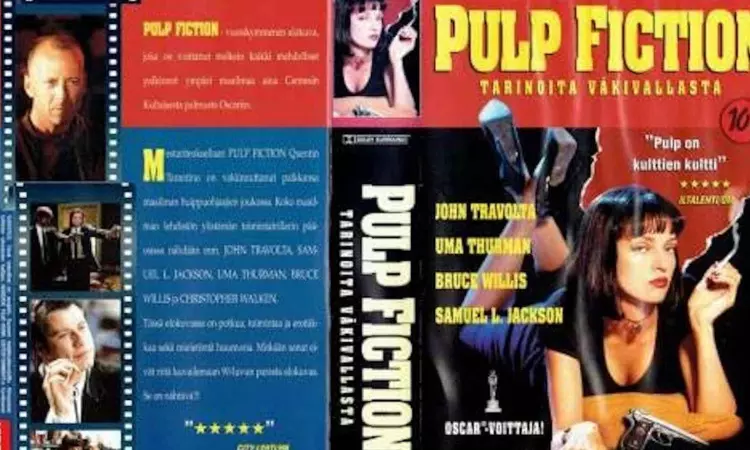30 years ago, Tarantino’s Pulp Fiction shook Hollywood and redefined ‘cool’ cinema
Directed by Quentin Tarantino, Pulp Fiction (1994) celebrates its 30th birthday this month.

Pulp fiction poster
Ben McCann
What might be the most seismic moment in American cinema? Film “speaking” for the first time in The Jazz Singer? Dorothy entering the Land of Oz? That menacing shark that in 1975 invented the summer blockbuster?
Or how about that moment when two hitmen on their way to a job began talking about the intricacies of European fast food while listening to Kool & The Gang?
Directed by Quentin Tarantino, Pulp Fiction (1994) celebrates its 30th birthday this month. Watching it now, this story of a motley crew of mobsters, drug dealers and lowlifes in sunny Los Angeles still feels startlingly new.
Widely regarded as Tarantino’s masterpiece, the director’s dazzling second film was considered era-defining for its memorable dialogue, innovative narrative structure and unique blend of humour and violence. It was nominated for seven Academy Awards, made stars of Samuel L. Jackson and Uma Thurman, and revitalised John Travolta’s career.
Pulp Fiction is dark, often poignant, and very funny. It is, as one critic describes it, an “intravenous jab of callous madness, black comedy and strange unwholesome euphoria”.
Famous for its non-linear narrative, Pulp Fiction weaves together a trio of connected crime stories. The three chapters – Vincent Vega and Marsellus Wallace’s Wife, The Gold Watch and The Bonnie Situation – loop, twist and intersect but, crucially, never confuse the viewer.
Tarantino has often paid tribute to French filmmakers Jean-Luc Godard and Jean-Pierre Melville, whose earlier films also presented their narratives out of chronological order and modified the rules of the crime genre.
By inviting audiences to piece Pulp Fiction together like a puzzle, Tarantino laid the way for subsequent achronological films such as Memento (2000), Go (1999) and Lock, Stock and Two Smoking Barrels (1998).
In his influential essay Postmodernism, or the Cultural Logic of Late Capitalism, first published in 1984, political theorist Frederic Jameson coined the term “new depthlessness” to describe postmodern culture.
Jameson perceived a shift away from the depth, meaning and authenticity that characterised earlier forms of culture, towards a focus on surface and style.
Pulp Fiction fits Jameson’s definition of depthlessness. It is stuffed with homages to popular culture and a vivid array of character types drawn from other B-movies – hitmen, molls, mob bosses, double-crossing boxers, traumatised war veterans and tuxedo-wearing “fixers”. It is a film of surfaces and allusions.
Jackson, Travolta and Thurman feature alongside established 1990s box-office stars including Bruce Willis and industry stalwarts Harvey Keitel and Christopher Walken, both of whom have brief but memorable cameos.
The film’s most iconic scene takes place at the retro 1950s-themed Jack Rabbit Slim’s diner. Thurman’s twist contest with Travolta fondly echoes Travolta’s earlier dancing in Saturday Night Fever (1977) and pays homage to other dance scenes in films such as 8 ½ (1963) and Band of Outsiders (1964).
Film critic Roger Ebert once noted how Tarantino’s characters “often speak at right angles to the action”, giving long speeches before getting on with the job at hand.
Pulp Fiction is full of witty and quotable monologues and dialogue, ranging from the philosophical to the mundane. Conversations about foot massages and blueberry pie bump up against Bible verses and reflections on fate and redemption.
The film’s 1995 Oscar for Best Original Screenplay was a fitting achievement for Tarantino, who many regard as the snappiest writer in film history. Countless other filmmakers have looked to replicate Pulp Fiction’s mashup of cool and coarse.



